These Indonesian drinks are perfect for any season, from spring to winter. They not only work well with scrumptious Indonesian plates but also with other delicacies around the world.
They do an excellent job presenting the remarkable culture in every part of Indonesia. If you have a chance, you should travel to Indonesia once to enjoy the authentic taste of these quenchers.
No more wandering around! Stay tuned, and I will walk you through this list right away!
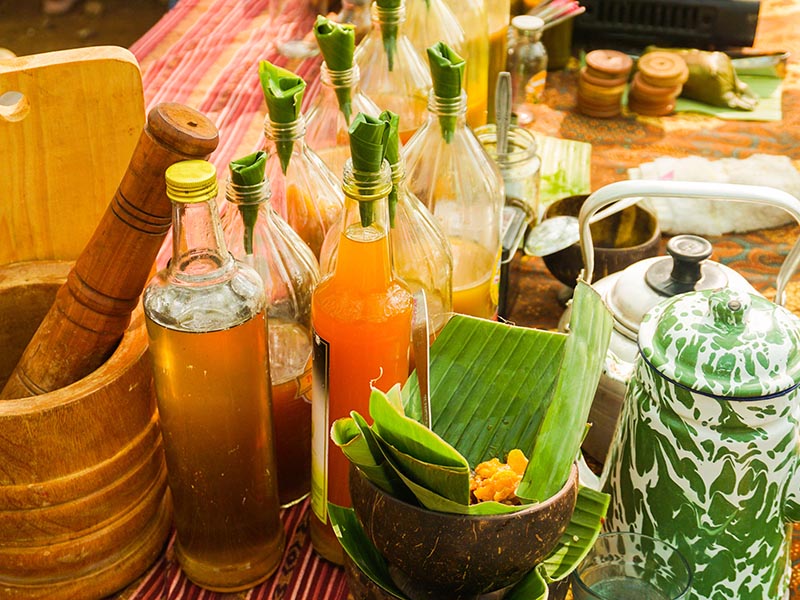
8 Hot Beverages Feature Distinctly Indonesia Theme
Let’s start with some hot drinks to stir up your mood and soul! In this part, there will have three unique cups of coffee that you must try. Other quenchers are lovely as well, so keep reading to avoid missing any wonderful drink.
1. Kopi Luwak (Weasel Coffee)
Non-alcoholic
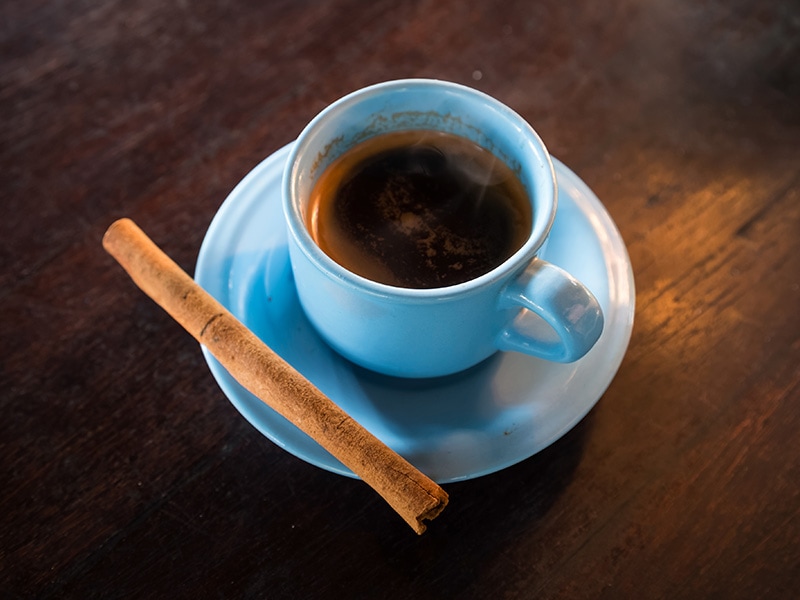
Kopi Luwak is one of the most exceptional coffees that exists in the world. The extraordinary element that builds up its reputation comes mostly from the making process.
The coffee cherries will go through the digestive system of the palm civet, a small mammal in Indonesia, but undigested. That means their stomach just consumes the pulp of the coffee cherries, and the coffee beans inside remain until defecation.
At that time, each bean will be embraced in acidic, enzymatic, and fermented activities in the palm civet’s stomach. The process sounds a bit gross, but trust me, Kopi Luwak is truly something else.
Thanks to the unique process, the final result will present a wonderful combination of smooth, earthy, and surprisingly not bitter compared to other coffees. Besides, Kopi Luwak also has a tinge of chocolate and caramel.
However, depending on the palm civet’s eating habits and health, such as mental well-being, or selection stage, will also affect the quality of the coffee beans.
Regarding Kopi Luwak origin, when Sumatra and Java still were under Dutch colonial rule in the 18th century, the Dutch brought Arabic coffee from the Arabian Peninsula. And they started to plant coffee to make a profit.
In the 19th century, when working at the plantation, the Java locals noticed that coffee cherries consumed by the palm civet stayed almost the same. Therefore, they started to apply that method and created Kopi Luwak.
Besides, different names of Kopi Luwak will correspond with different regions such as Kape Motit in Cordillera, Kap Alamid in Tagalog, and Kape Melo (or Kape Musang) in Mindanao.
As you may know, Kopi Luwak appears on the list of expensive coffees globally owing to its unusual method. Its price usually ranges from 150 dollars per pound.
Where to buy: You can find this authentic coffee mainly in Sumatra, Bali, and Sulawesi islands, especially the Pangalengan Highlands of West Java, an ideal place for creating Kopi Luwak.
Everything you need to know about Kopi Luwak is here!
2. Kopi Joss (Charcoal Coffee)
Non-alcoholic
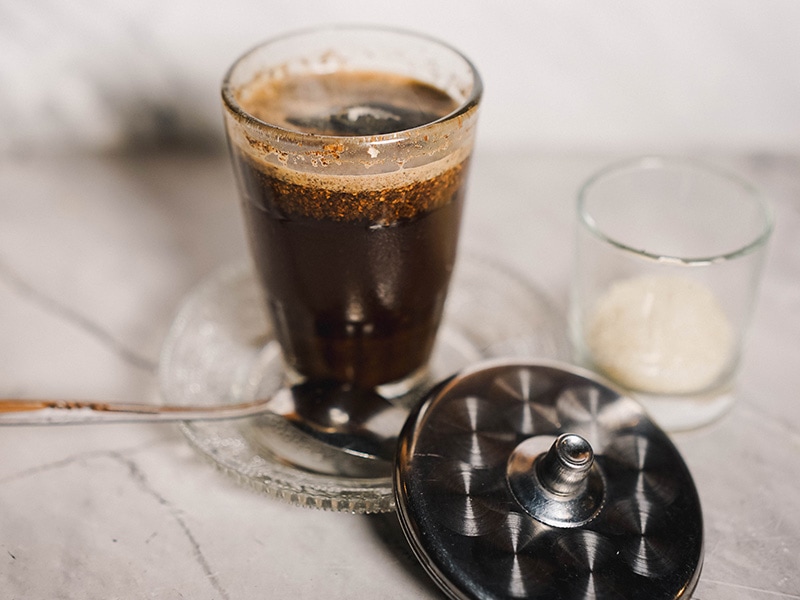
Here is another outstanding coffee in Indonesia that will surprise you, from the making process to the flavor, Kopi Joss. It originated in Yogyakarta, which has a deeply rooted coffee tradition and is responsible for being the main coffee export in Indonesia.
In the 1960s, Mr. Man, the owner of a local coffee shop, created Kopi Joss for those who have issues with their stomach but still want to enjoy coffee like him. Nowadays, the coffee stand is run by Alex, the current generation owner.
He says when Mr. Man was preparing the coffee, he accidentally looked at the charcoal on the fire and immediately thought of putting that coal into the coffee.
After testing, the coffee was edible and worked with his stomach, so he started to trade it for customers. Alex states that compared to other coffees, Kopi Joss not only can lessen bloating times but also relieve nausea, diarrhea, or heartburn.
According to some local students’ analysis, thanks to the hot charcoal, Kopi Joss becomes a type of coffee containing less caffeine and acidic sensation than the typical one.
About the name “Kopi Joss”, “Kopi” means coffee, while “Joss” basically came from the sound of dropping the burning coal into the coffee cup, immediately resulting in the sizzling sound.
Once the charcoal burns out, you can pick it up and enjoy the coffee immediately. Some describe Kopi Joss as nothing more than a normal coffee. On the other hand, others say the coffee contains a unique taste with a tinge of burnt sugar flavor.
Where to buy: Street vendors and coffee shops in Yogyakarta.
3. Kopi Tubruk (Mud Coffee)
Non-alcoholic
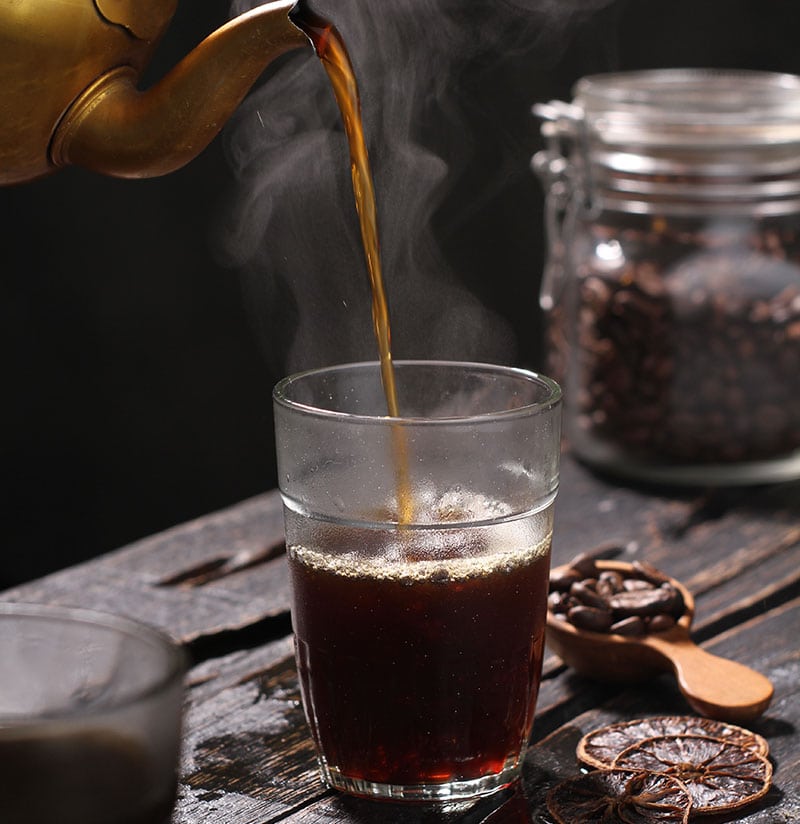
Kopi Tubruk is similar to black coffee and belongs to the Indonesian coffee culture. Indonesians usually make it by pouring hot water into fine ground coffee and solid sugar. So it will have a dense texture related to another famous drink in Turkey: Turkish coffee.
The coffee is primarily found in Bali and Java, Indonesia’s two best-known islands. Besides, in Bali, locals call Kopi Tubruk with the name Kopi Selem, which is black coffee when translated into English.
Some historical sources say the traders from the Middle East introduced Kopi Tubruk (mud coffee in the Middle East) to Indonesia. Then, the coffee started to spread over Yogyakarta and central Java.
You may already know “Kopi” is coffee in English. Meanwhile, “Tubruk” means collision as in the Javanese language. And the name tells itself – the extraordinary preparation process.
Sometimes, if people don’t have ground coffee on hand, they will use instant coffee with no sugar or milk as a replacement. In some modern recipes, Kopi Tubruk might include condensed milk.
Kopi Tubruk has succeeded in domestic and overseas markets like Malaysia, China, Saudi Arabia, etc.
Where to buy: Stalls, street stands, coffee shops, and Warungs (family small shops) in Indonesia.
4. Bajigur (Palm Sugar And Coconut Milk Drink)
Non-alcoholic

Are you finding a hot drink to warm your body during chilly and rainy days? So, I guess a glass of Bajigur will help you deal with that problem.
Bajigur is an idea of the Sundanese people existing in West Java, Indonesia. Interestingly, Javanese people used “Bajigur” to reduce the negative tone of the curse word “Bajingan” or Bajirut”.
The beverage usually consists of coconut milk and Aren sugar (palm sugar). Besides, people add salt and ginger to enhance its warm-up ability.
In the traditional recipe, people will add pandan leaves to create an aromatic odor, while in the modern recipe, artificial vanilla powder is usually the utmost option.
A glass of Bajigur will offer spicy ginger, slightly sweet Aren sugar, and creamy coconut milk. Locals often serve the drink with iconic snacks, including boiled bananas, sweet potatoes, or peanuts.
Where to buy: Mobile vendor carts, roadside cafes, and street stalls in Indonesia.
Follow this detailed guide to learn to make Bajigur.
5. Bandrek (Ginger And Palm Sugar Drink)
Non-alcoholic
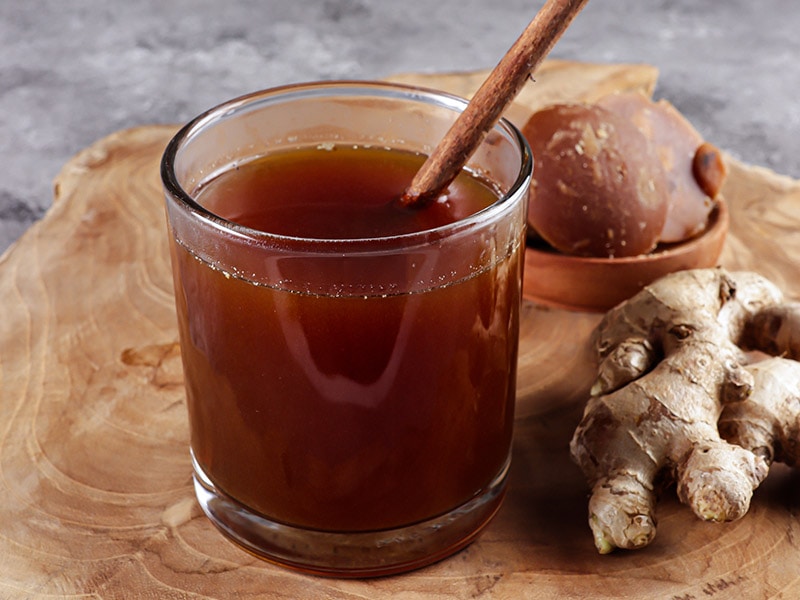
Because the Sundanese live in the highland areas of West Java, Indonesia, they have many hot drinks to meet their demand. With that being said, they also have another traditional hot drink, Bandrek, as an alternative beverage of Bajigur.
You might mistake Bandrek with Bajigur at first sight, but these two beverages are different.
Unlike Bajigur, with coconut milk and palm sugar as its main ingredients, Bandrek is a mixture of ginger water, palm sugar (or brown sugar), and other components such as lemongrass, black pepper, etc.
Bandrek is translucent with a brown color and has a typically intense ginger odor. Besides, people usually add sweetened condensed milk to this concoction. If desired, they also add young coconut meat to further the delightful experience.
The drink contains a high amount of ginger essence, which surely brings several benefits to the human body. It not only warms the body but also alleviates cough and sore throat.
Where to buy: Indonesian coffee shops.
6. Wedang Jahe (Ginger Tea)
Non-alcoholic
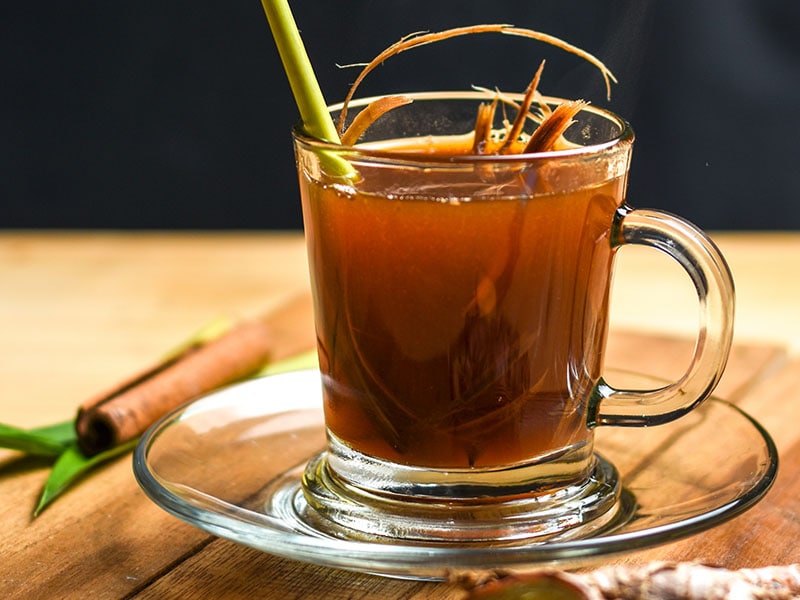
Indonesians also have their unique version of ginger tea, Wedang Jahe. This ginger tea mostly comes from Central and East Java. Local people usually use this tea to lighten up their new day.
When translated into English, “wedang” is a hot beverage and “jahe” is ginger. Indonesians often serve Wedang Jahe to customers in spa and beauty shops as a last step of the relaxed service.
Wedang Jahe has fresh ginger root as its main ingredient, and then comes the iconic palm sugar (granulated cane sugar, brown sugar, or honey instead). Because people there usually want their drink to have an attractive aroma, they add pandan leaves.
Besides, they also put spices, including lemongrass, cinnamon sticks, and cloves, to enhance the flavor. The glass presents a spicy ginger taste and a slightly sweet taste from palm sugar.
Where to buy: Roadside cafes and coffee shops throughout Indonesia.
7. Wedang Uwuh (Herb Drink)
Non-alcoholic
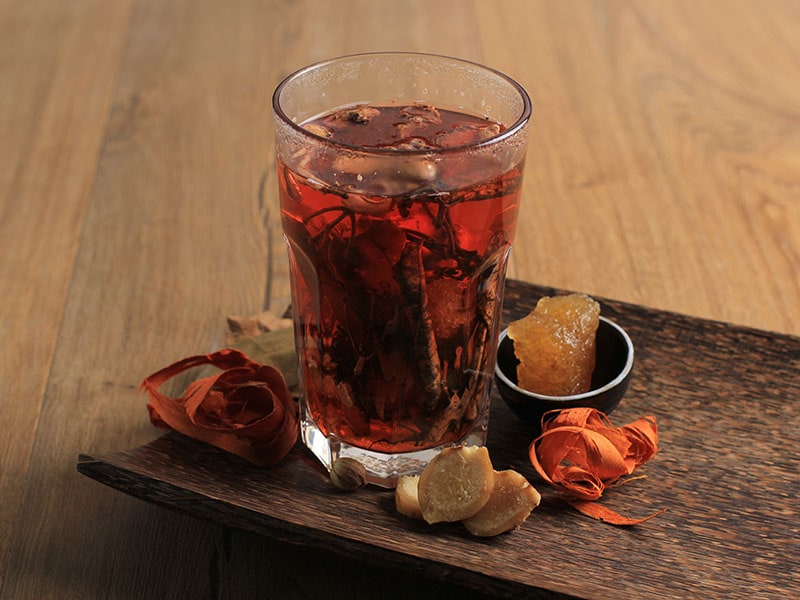
Yogyakarta, a province in Indonesia, has many healthy traditional drinks that can benefit the human body a lot, and Wedang Uwuh is no exception.
The drink has a variety of herbs and spice blends floating inside the glass. That said, Wedang Uwuh can decrease cholesterol rate and support blood flow.
Traditionally, they won’t choose the green leaves that still attach to the tree because they’ll make the beverage bitter.
Locals usually collect the fallen leaves (clove, nutmeg, or cinnamon) and cook them with other spices, hence the name Wedang Uwuh. In Javanese words, Wedang Uwuh means garbage or trash drink.
The final result will have a clear brownish-red color with a unique aroma from the herbs. Besides, Yogyakarta people often add candy sugar to sweeten the drink.
Where to buy: Herb stores and traditional tea stores in Indonesia.
8. Teh Talua (Indonesian Eggnog)
Non-alcoholic

Egg and tea won’t ever be a terrible pair, and Teh Talua will be solid proof. This concoction from West Sumatra, Indonesia, will comfort your soul and brighten the whole day.
The cup of tea consists of egg yolk (duck or chicken egg is all perfect) as the main character, along with sugar and calamondin.
Locals will traditionally beat the eggs with sugar until it reaches a frothy stage, then they pour hot tea into the mixture and stir it well.
Where to buy: Indonesian coffee shops, tea stores, and street stalls.
6 Indonesian Cold (Or Chilled) Drinks That Cool Down The Summer Heat
In this section, I will show you the top six incredible cold drinks from Indonesia to enjoy. Some of them are not only yummy but also healthy and nourishing.
9. Jamu Kunyit Jaha Asam (Turmeric Ginger Drink)
Non-alcoholic
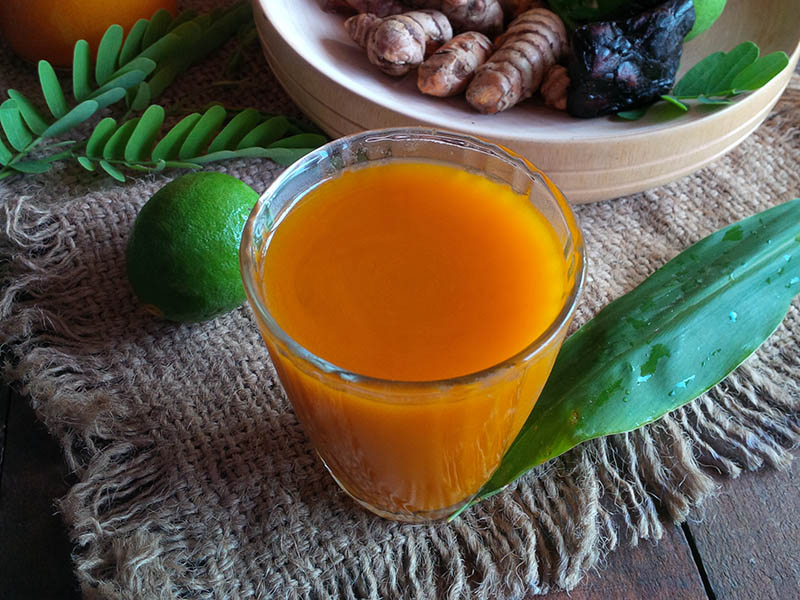
Jamu juice is a type of tonic drink originating in Java, Indonesia. Jamu is well-known for its health benefits to humans.
Jamu has become popular throughout Indonesia, especially in Yogyakarta and Surakarta, and gradually gained fame worldwide.
The drink contains fresh ginger and turmeric rhizome as the main ingredients. Besides, other parts such as bark, leaves, fruits, and seeds can be used in this drink. Sometimes, they will add honey, milk, or even chicken eggs to level up the flavor.
In some cases, if you don’t have pure turmeric on hand, you can replace it with dried turmeric. But obviously, the fresh one will always bring more benefits and is more delicious than the dried one.
Some sources say the name is derived from Javanese, meaning that this juice belongs to the Javanese community. On the other hand, it is supposed to originate from “Jampi”, the ancient Javanese word that literally means “magic formula”.
Thanks to a variety of powerful herbs, Jamu can have the ability to work as a medicine. It not only improves the digestive situation but also decreases cholesterol levels and improves the immune system.
You can drink Jamu daily with a sufficient amount to maintain a healthy body, prevent ailment, and improve healing function. One more exciting thing is that Jamu can also appear in the shape of capsules, pills, and powder.
Where to buy: Hotels, restaurants, Jamu shops, and street vendors (usually women) in Indonesia. Also, you can purchase them from Air Mancur, Sido Muncul, or Djamu Djago manufacture.
It’s completely worth your time when it comes to learning how to make Jamu Kunyit Jaha Asam.
10. Es Kelapa Muda (Young Coconut Ice)
Non-alcoholic

Coconut is one of the most famous fruits in Indonesia. Coming to this country, you will stumble upon several stalls selling Es Kelapa Muda, a drink made of cold coconut water and young coconut meat.
Sometimes, to sweeten the drink, people add honey or syrup. The syrup often is coco pandan syrup which consists of pandan juice and coconut syrup. Besides, cinnamon and clove might be included depending on each person’s appetite.
In 2011, as stated by CNN, this coconut drink was added to the list of 50 best delicious beverages worldwide. And I think that is more than enough to prove its popularity.
Where to buy: Indonesian street stalls, street hawkers, and roadside cafes.
11. Es Cendol (Pandan Jelly Dessert)
Non-alcoholic
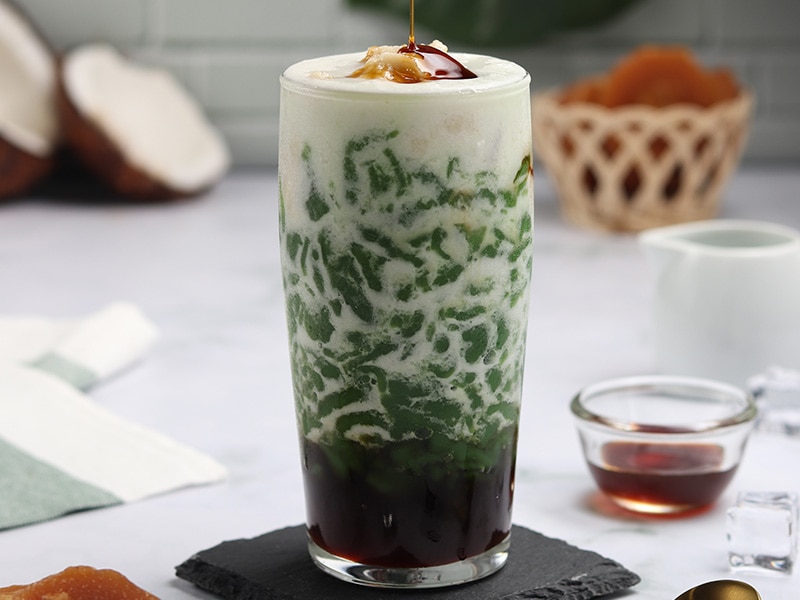
Es Cendol, or pandan jelly, is a type of dessert (but served in a glass) that is famous in Indonesia. Although the derivation of Cendol is still blurry, some say it came from Java island in Indonesia with the former name “Dawet”.
In West Java, people will call the drink Es Cendo. Meanwhile, in Central Java and East Java, it’s referred to as Es Dawet. Outside of Indonesia, it’s also a well-loved dessert in Vietnam, Thailand, and other South East Asian countries.
The drink will have translucent white coconut milk as a base with many toppings, such as diced jackfruit or durian, and, more important, the chewy green jelly.
With Cendol, locals usually use pandan leaves as a coloring method, making the jellies naturally green. Besides, you might see the Cendol in other colors like pink or transparent.
Where to buy: Hawker centers (or cooked food centers), makeshift stalls, and food courts in Indonesia. Besides, you can find vendors selling Cendol mostly in Jakarta, Bandung, and Yogyakarta.
12. Bir Pletok (Non-Alcoholic Beer)
Non-alcoholic
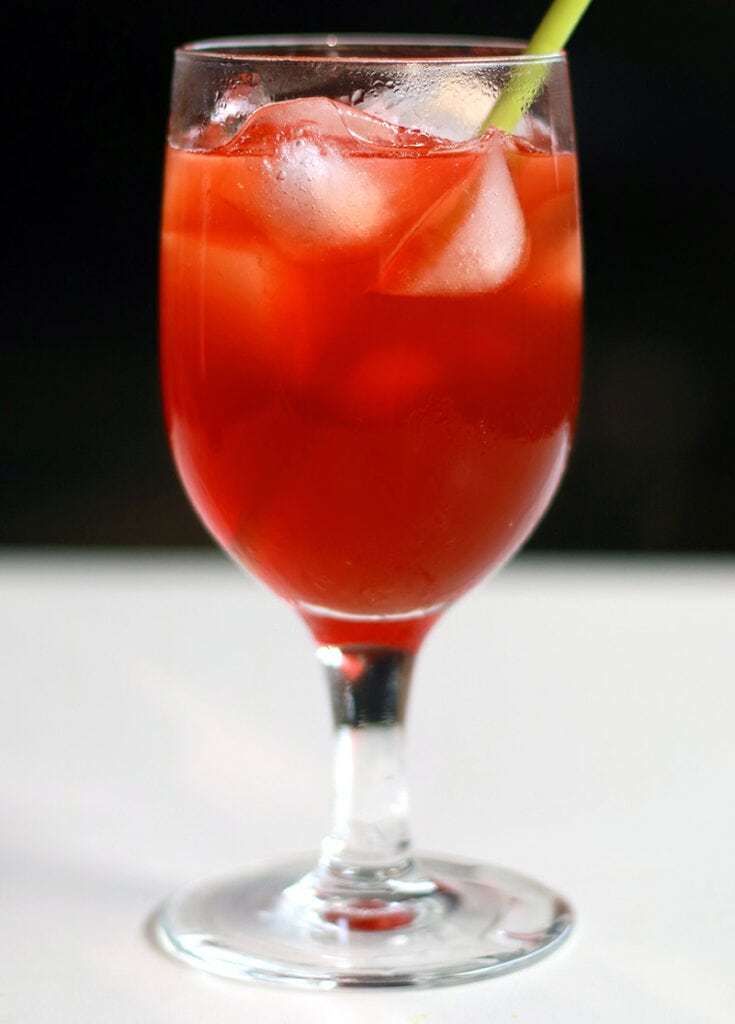
Bir Pletok is a fabulous drink made by the Betawi people in Jakarta, Indonesia. It’s beer but contains zero alcohol with an eye-catching reddish liquid and pink froth.
During the Dutch empire, the Dutch and Europeans brought beer to Indonesia because they enjoyed alcoholic drinks. However, Betawil locals can’t enjoy that beer because they are Muslims, so they decided to make one themself that tastes like beer without alcohol.
Bir Pletok consists of many spices, from ginger and lemongrass to pandan leaves and boiled sappan wood. Usually, ancient people used bamboo as a container for Bir Pletok.
They pour the beer into the tube, add ice cubes, and then shake well for 1-2 minutes until the tiny bubbles turn up. And this action is also the answer to the name Pletok because when shaking, it will sound like pletok-pletok.
Where to buy: Restaurants and coffee shops in Indonesia.
13. Es Timun Serut (Cucumber And Lime Juice)
Non-alcoholic
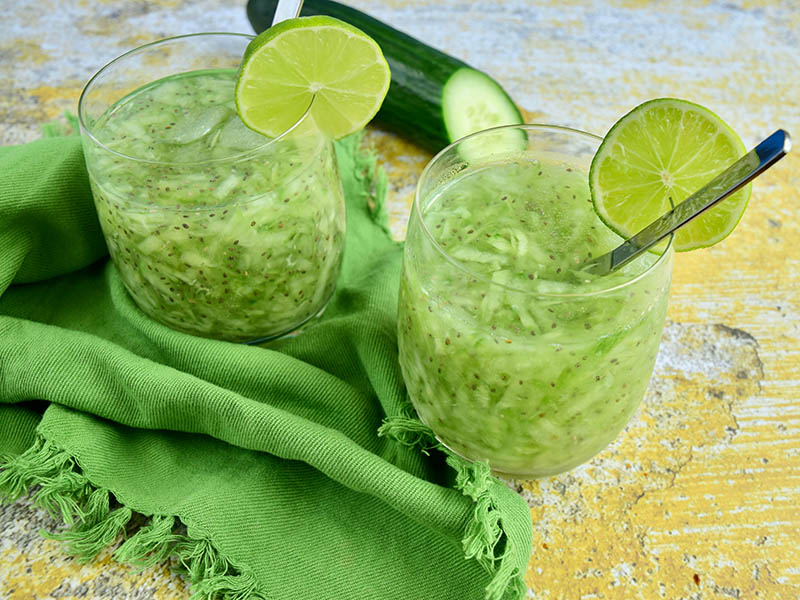
When I see Es Timun Serut at first sight, I immediately know this is exactly all I need for the summer holiday. The drink is a famous beverage in Indonesia and appears during Ramadan as a key element.
The list of the ingredients is very easy to access, including cucumber, water, basil seeds, and syrup (melon, coco pandan, or strawberry syrup are all great).
Because Es Timun Serut has cucumber, it will keep you hydrated and avoid constipation. Besides, the drink offers you antioxidants and vitamin A to boost overall health function.
Where to buy: Take-away stores, street vendors, street stalls, and coffee shops in Indonesia.
Here Are Some Recipes For To Make Marvelous Indonesian Beverages
Below are the two recipes that I think you should know. One will rock up your day with its fine coffee, and one will be a medicine drink (but still delicious) that can suit anyone.
1. Kopi Tubruk (Mud Coffee)
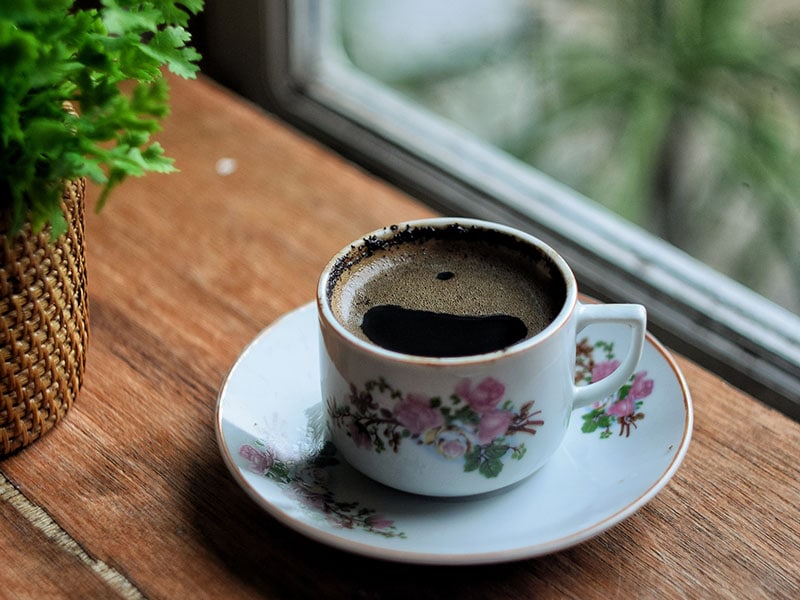
You don’t need to travel to Indonesia to enjoy Kopi Tubruk. Just head to the supermarket, grab all the essential ingredients and start creating the coffee yourself.
Ingredients: Fine ground coffee, sugar, and hot water.
Step 1: Put a tablespoon of coffee and sugar (an amount that suits your appetite) into a glass.
Step 2: Gradually add a bit of hot water and stir well, then continue to add the remaining water.
Step 3: Cover the glass with a saucer and leave it for a few minutes, then it’s ready to drink.
2. Jamu Kunyit Jaha Asam (Turmeric Ginger Drink)
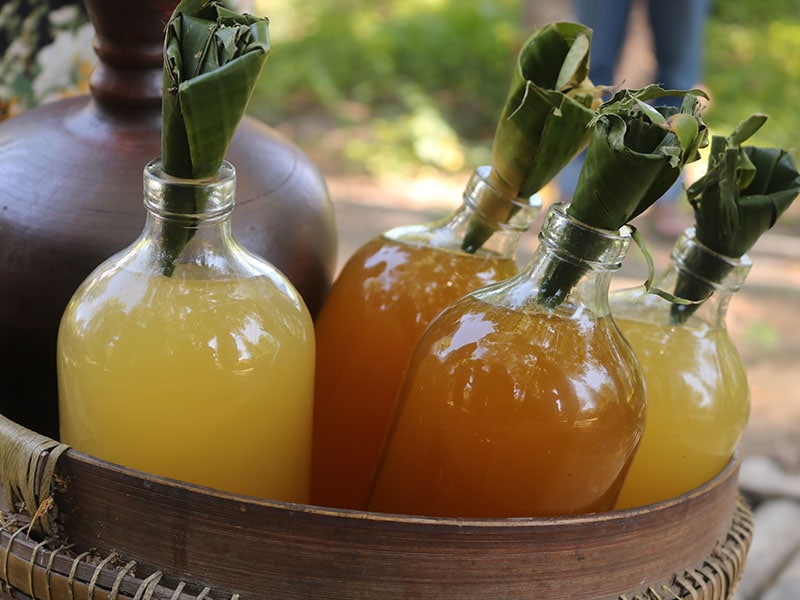
Well, because this Jamu drink is the most healthy drink on the list so far, I’ll give you detailed instructions so you can serve it to your family.
Ingredients: Fresh turmeric, ginger, coconut water, lemon juice, honey (or other sweeteners), and black pepper.
Step 1: Cut fresh turmeric and ginger into slices. You can leave the skin or peel it off.
Step 2: Add all the ingredients except lemon juice and honey into a blender. Blend the mixture at a high setting for 1 minute until you achieve a smooth combination.
Step 3: Boil and simmer the mixture for 20 minutes with low heat. Then you can stir the liquid with the remaining components.
Step 4: Strain it to remove the dregs. Pour the liquid into a glass and enjoy.
How can Indonesians make their Jamu Kunyit Jaha Asam?
These Indonesian Drinks Are Ultimately Fabulous!
In a nutshell, Indonesian beverages are so wonderful, thanks to the locals, who have a creative brain. If you dodge these quenchers, you will miss a great opportunity to try out the Indonesian culture essence in each drink.
As usual, if you find this information I’ve just provided helpful, please share it with your friends and your family. And don’t forget to show me your outcomes along with interesting experiences that you encounter. Thank you!
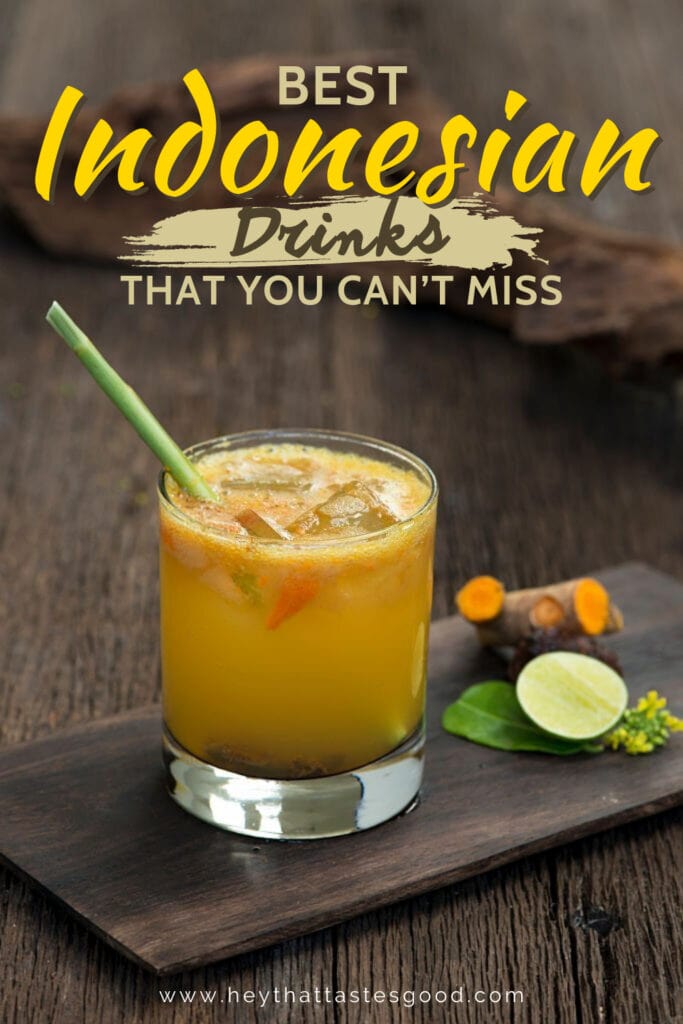


Truc Tran (Kris)
Expertise
Home Cooking, Meal Planning, Recipe Development, Baking and Pastry, Food Editor, Cooking-video Maker, Asian Food Content Creator, Vietnamese Food Evaluation Expert
Education
Program: Diploma of Hospitality (Commercial Cookery)
Focus: The culinary program included a Certificate III in Commercial Cookery, a Certificate IV in Kitchen Management, and a Diploma of Hospitality Management. This education provided a comprehensive blend of theoretical and practical training in finance, sustainability, diversity, and human resources management.
Program: Culinary Arts at Kendall College (Australia Branch in Sydney)
Focus: Explored global cuisines, and developed entrepreneurial abilities to manage a successful food business, along with acquiring essential language, math, computer, and communication skills for success.
Program: Certificate of Vietnamese Cuisine Head Chef
Focus: Master traditional and modern Vietnamese cooking techniques.
Truc Tran, or Kris, is an accomplished food editor with extensive training in hospitality and culinary arts, including a deep focus on Vietnamese cuisine from various prestigious institutions. She possesses over nine years of experience, developing her expertise in global cuisines and blending traditional Vietnamese cooking with contemporary trends to create engaging and educational content.
She also has a rich educational background, including a Diploma of Hospitality from TasTAFE and a Bachelor of Arts in Culinary Arts from Kendall College’s Sydney branch. It enables her to offer unique insights into meal planning, recipe development, and food culture, making her articles and cooking videos both informative and appealing.